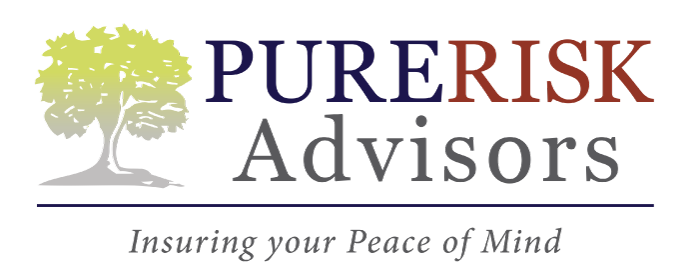Colorado Multi-Unit Habitational Insurance
9:00am - 5:00pm Mon-Fri
We'll Reply in 15min*
Top 3 Recommended Policies
By: John Jacquat
Business Insurance Advisor
303-843-1001
Index
Contact Us
Phone
Location
In the beautiful state of Colorado, multi-unit habitational insurance is an essential consideration for property owners and investors. This type of insurance provides coverage for residential properties that consist of multiple units, such as apartment buildings, condominiums, and townhouses. As the real estate market continues to grow, understanding the nuances of this insurance becomes increasingly important. In this article, we will explore everything you need to know about Colorado multi-unit habitational insurance, including its importance, coverage options, and tips for selecting the right policy.
Understanding Multi-Unit Habitational Insurance
Multi-unit habitational insurance is designed to protect property owners from various risks associated with owning and managing residential properties with multiple units. This insurance is crucial for landlords, property managers, and real estate investors who want to safeguard their assets and ensure financial stability.
What Does Multi-Unit Habitational Insurance Cover?
This type of insurance typically covers a range of risks, including but not limited to:
- Property damage due to fire, storms, or vandalism
- Liability claims arising from injuries on the property
- Loss of rental income due to property damage
- Legal expenses related to tenant disputes
Having comprehensive coverage can provide peace of mind, knowing that you are protected against potential financial losses that could arise from unforeseen circumstances. Furthermore, many policies also include coverage for additional living expenses, which can assist tenants displaced by a covered loss, ensuring that they have a place to stay while repairs are made. This not only helps maintain tenant satisfaction but also protects the landlord’s reputation and rental income stream.
Why is Multi-Unit Habitational Insurance Important?
Investing in multi-unit properties can be lucrative, but it also comes with inherent risks. Without adequate insurance coverage, property owners may face significant financial burdens in the event of a disaster or liability claim. Multi-unit habitational insurance helps mitigate these risks by providing the necessary financial protection. For instance, if a fire were to damage several units, the cost of repairs and potential loss of rental income could be staggering, making insurance not just a safety net but a vital component of property management.
Additionally, many lenders require property owners to carry insurance as a condition of financing. This requirement underscores the importance of having a solid insurance policy in place. Beyond fulfilling lender requirements, a well-structured insurance policy can also enhance a property owner's credibility with potential tenants, as it demonstrates a commitment to maintaining a safe and secure living environment. Moreover, understanding the nuances of different coverage options allows property owners to tailor their policies to fit their specific needs, ensuring that they are not overpaying for unnecessary coverage while still being adequately protected against the unique risks associated with multi-unit dwellings.

Types of Coverage Available
When it comes to multi-unit habitational insurance, there are several types of coverage options available. Understanding these options can help you tailor your policy to meet your specific needs.
Property Coverage
Property coverage is a fundamental aspect of multi-unit habitational insurance. It protects the physical structure of the building, including:
- The building itself
- Common areas, such as hallways and laundry rooms
- Personal property owned by the landlord, such as appliances and furniture in common areas
This coverage is essential for safeguarding your investment against damages caused by natural disasters, theft, or vandalism. Additionally, it can also cover the costs associated with debris removal and the expenses incurred in making temporary repairs to prevent further damage. By securing comprehensive property coverage, landlords can ensure that their assets are well-protected, allowing them to focus on managing their properties without the constant worry of unforeseen financial setbacks.
Liability Coverage
Liability coverage protects property owners from claims made by tenants or visitors who may be injured on the property. This type of coverage can help cover:
- Medical expenses for injured parties
- Legal fees associated with defending against lawsuits
- Settlements or judgments awarded to injured parties
Having adequate liability coverage is crucial for protecting your financial interests and ensuring compliance with local laws. Furthermore, it can also extend to cover incidents that occur in common areas, such as slip-and-fall accidents or injuries resulting from poorly maintained facilities. This aspect of liability coverage not only provides peace of mind to property owners but also fosters a safer environment for tenants and guests, which can enhance the overall reputation of the property.
Loss of Income Coverage
Loss of income coverage is another important component of multi-unit habitational insurance. If your property becomes uninhabitable due to a covered event, this coverage can help compensate for lost rental income during the repair period. This can be particularly beneficial for property owners who rely on rental income to cover mortgage payments and other expenses. In addition to natural disasters, loss of income coverage can also apply in cases of extensive repairs due to fire or water damage, ensuring that landlords are not left financially vulnerable during prolonged periods of vacancy. This type of coverage can be a lifeline, allowing property owners to maintain their financial stability while ensuring that necessary repairs are made promptly and effectively.
Factors Influencing Insurance Premiums
Several factors can influence the cost of your multi-unit habitational insurance premiums. Understanding these factors can help you make informed decisions when selecting a policy.
Location of the Property
The location of your property plays a significant role in determining insurance premiums. Properties in areas prone to natural disasters, such as floods or wildfires, may have higher premiums due to the increased risk. Conversely, properties in low-risk areas may benefit from lower premiums. Additionally, urban locations with higher crime rates can also lead to increased premiums, as insurers factor in the likelihood of theft or vandalism. On the other hand, neighborhoods with strong community watch programs or lower crime statistics might enjoy reduced rates, making it essential to consider the broader context of your property's environment.
Building Age and Condition
The age and condition of the building also impact insurance costs. Older buildings may require more maintenance and repairs, leading to higher premiums. Additionally, properties that have been well-maintained and updated with modern safety features may qualify for discounts. It's important to note that the materials used in construction can also play a role; for instance, buildings made from fire-resistant materials may attract lower premiums compared to those made from more combustible materials. Regular inspections and updates not only enhance safety but can also be a proactive approach to managing insurance costs over time.
Claims History
Your claims history can affect your insurance premiums as well. If you have a history of filing claims, insurers may view you as a higher risk, resulting in increased premiums. Maintaining a good claims history can help you secure more favorable rates. Furthermore, some insurers offer programs that reward policyholders for not filing claims over a certain period, which can lead to significant savings. It’s beneficial to consider preventive measures, such as installing security systems or engaging in regular property maintenance, as these actions can help mitigate risks and potentially lower future claims, thereby influencing your premium rates positively.

Choosing the Right Insurance Provider
Selecting the right insurance provider is a critical step in securing multi-unit habitational insurance. Here are some tips to help you make an informed choice
Research and Compare Providers
Take the time to research different insurance providers and compare their offerings. Look for companies that specialize in multi-unit habitational insurance, as they will have a better understanding of your unique needs. Online reviews, ratings, and testimonials can provide valuable insights into the experiences of other property owners. Additionally, consider reaching out to local real estate associations or property management groups, as they often have recommendations based on collective experiences. Networking with other landlords can also yield insights into which providers offer the best customer service and claims handling.
Understand Policy Terms and Conditions
Before committing to a policy, carefully review the terms and conditions. Pay attention to coverage limits, exclusions, and deductibles. Ensure that the policy aligns with your specific requirements and that you fully understand what is covered and what is not. It’s also wise to inquire about any additional endorsements or riders that can enhance your coverage, such as protection against natural disasters or liability coverage for tenant injuries. Understanding the fine print can save you from unexpected costs and ensure that you are adequately protected in various scenarios.
Seek Professional Advice
Consulting with an insurance agent or broker can provide valuable guidance when selecting a policy. They can help you navigate the complexities of multi-unit habitational insurance and recommend options that best suit your needs. Additionally, they can assist you in understanding the nuances of local regulations and requirements. An experienced professional can also help you assess your risk exposure and suggest strategies to mitigate those risks, such as implementing safety measures or improving property maintenance practices. This proactive approach not only helps in securing the right coverage but can also lead to potential discounts on your premiums.
Common Exclusions in Multi-Unit Habitational Insurance
While multi-unit habitational insurance provides extensive coverage, it is essential to be aware of common exclusions that may apply. Understanding these exclusions can help you avoid surprises when filing a claim.
Natural Disasters
Many policies exclude coverage for certain natural disasters, such as earthquakes and floods. Depending on your property's location, you may need to purchase separate policies or endorsements to cover these risks adequately. For instance, in areas prone to seismic activity, earthquake insurance can be a vital addition to your coverage. Similarly, flood insurance is often necessary in regions near bodies of water or in low-lying areas, as standard policies typically do not include this peril. It’s advisable to consult with your insurance agent to assess your specific needs based on geographic risks.
Wear and Tear
Insurance policies typically do not cover damages resulting from normal wear and tear. This includes issues like aging roofs, plumbing leaks, or electrical problems that arise over time. Regular maintenance and inspections are crucial to prevent such issues from escalating. Property owners should establish a routine maintenance schedule, which may include checking for signs of deterioration, cleaning gutters, and servicing HVAC systems. By being proactive, you can not only extend the life of your property but also minimize the risk of costly repairs that insurance won't cover.
Negligence
If a claim arises due to negligence on the part of the property owner, it may not be covered. For example, failing to address safety hazards or maintain the property can lead to liability claims that are not covered by insurance. This can include situations where a tenant is injured due to poorly maintained common areas or faulty equipment. To mitigate this risk, property owners should document their maintenance efforts and promptly address tenant complaints. Additionally, investing in safety measures, such as adequate lighting and secure entry points, can further protect both tenants and property owners from potential liability issues.
Tips for Reducing Insurance Premiums
While multi-unit habitational insurance is a necessary expense, there are ways to reduce your premiums without sacrificing coverage. Here are some tips to consider.
Increase Your Deductible
One effective way to lower your premiums is by increasing your deductible. A higher deductible means you will pay more out of pocket in the event of a claim, but it can significantly reduce your monthly premium costs. Just ensure that you can comfortably afford the deductible amount if a claim arises. It's important to weigh the potential savings against the financial risk; for instance, if you rarely file claims, a higher deductible might be a smart choice. However, if you anticipate needing to make claims more frequently, it may be worth keeping a lower deductible to avoid unexpected expenses.
Bundle Policies
Many insurance providers offer discounts for bundling multiple policies. If you have other insurance needs, such as auto or liability insurance, consider purchasing them from the same provider. This can lead to substantial savings on your overall insurance costs. Additionally, bundling can simplify your financial management, as it allows you to keep track of fewer payments and policies. Some insurers even offer loyalty discounts for long-term customers, so maintaining a good relationship with your provider can further enhance your savings.
Implement Safety Measures
Investing in safety measures can also help reduce your insurance premiums. Installing security systems, smoke detectors, and fire alarms can lower the risk of claims and may qualify you for discounts. Additionally, maintaining the property in good condition can demonstrate to insurers that you are a responsible property owner. Regular inspections and timely repairs can prevent larger issues down the line, which not only protects your investment but also keeps your premiums in check. Furthermore, consider engaging with local fire and safety departments; they often provide resources and recommendations for enhancing safety that could lead to additional discounts on your insurance policy.
Review Your Coverage Annually
Another vital step in managing your insurance premiums is to review your coverage annually. Life changes, such as renovations, new tenants, or changes in local laws, can affect your insurance needs. By reassessing your policy, you can identify areas where you might be over-insured or discover new discounts that have become available. Additionally, staying informed about market trends can help you negotiate better rates or switch providers if necessary. Keeping an open line of communication with your insurance agent can also provide insights into potential savings tailored to your specific situation.
Conclusion
Multi-unit habitational insurance is a vital component of protecting your investment in Colorado's real estate market. By understanding the coverage options available, the factors influencing premiums, and the importance of choosing the right insurance provider, you can make informed decisions that safeguard your assets.
As you navigate the complexities of multi-unit habitational insurance, remember to stay proactive in maintaining your properties and addressing potential risks. With the right coverage in place, you can enjoy the benefits of property ownership while minimizing your exposure to financial loss.
Ultimately, investing in multi-unit habitational insurance is not just about protecting your property; it's about ensuring peace of mind for you and your tenants. By being well-informed and prepared, you can confidently manage your multi-unit properties in the beautiful state of Colorado.


